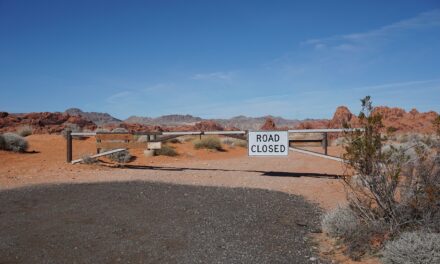This article reviews the number of vacant single family residences (SFRs) statewide, and digests the impact foreclosures have had on vacancies. For a forecast of vacancy rates in the future, see the companion first tuesday article, Time to move in… to California’s vacant SFRs.
Empty homes loom large
Consider a homeowner in Riverside, San Bernardino, Modesto or any other vacancy-riddled California bedroom community. The homeowner wants to sell his home and move. His ability to sell at an acceptable price, however, is hindered by persistently softening housing prices, made worse by the suburban blight of vacant neighboring properties.
The question on the mind of this homeowner, and on the minds of inland-area real estate licensees, sellers and homebuyers, is: How much longer will vacancies plague the housing market?
For starters: The U.S. Census Bureau (the Census) reports that out of a total of 13.5 million residential units in California mid-2010 (approximately 8.5 million of which were SFRs), the overall vacancy rate for residential rental, non-rental and second home properties was 8%.
These 1.1 million vacant units can be broken down and categorized as:
- residential units held out for rent to tenants, or rentals(including single family residences (SFRs), apartments and condos) which include:
- 374,610 units (33%) held out for rent; and
- 20,347 (1%) rented but not yet occupied;
- SFRs held out for sale or currently owned by buyer-occupants, or non-rental SFRs, including:
- 154,775 (14%) non-rentals for resale to buyer-occupants;
- 34,288 (4%) sold to a buyer-occupant, but not yet occupied; and
- 302,815 (27%) SFRs held for personal use only, or second homes; and
- 215,748 (20%) SFRs for which the owner’s intended use has not been ascertained.
As always, the overall vacancy rate varies from county to county, with the coastal cities experiencing significantly lower rates of vacancy than the inland suburban and exurban regions. For example, vacancy rates were as high as 16% in Riverside (which has borne the brunt of the housing crash) and as low as 4% in Santa Clara (thanks in part to continuing above-average employment from the technology sector). [For a complete list of vacancy rates by county in California, see the California Department of Finance California State Data Center.]
first tuesday estimates 65% (715,000) of California’s vacant units are non-rental SFRs: those held for resale to a buyer-occupant, those sold but not yet occupied, those held for seasonal, recreational or occasional use, and those whose purpose is unknown. The Census Home Vacancy Survey estimates the rate of vacancy for non-rental SFRs available for sale in 2011 as 2.1% in the fourth quarter of 2011.The Census also places the rate of vacant rental properties at 6.1%
The toll of foreclosures
Statewide, first tuesday estimates at least 31% of vacant units are owned and not held out to be rented or sold. They are categorized as:
- second homes (thanks to the widespread speculation in second homes in the mid 2000s);
- homes held (but not yet for sale) by renovators and speculators who intend to “flip” them for profit as soon as is economically feasible; and
- homes simply being held by absentee owners.
These vacant non-rental SFRs are for the most part well-maintained, and are part of a normally functioning real estate market. They may enter the market as homes for sale at some point in the future, if their owners decide that such a move is economically beneficial.
On the other hand, at least 14% of vacant SFR properties are for sale right now. This supply comes in large part from real estate owned property (REO) inventory, which makes up 35% to 40% of resales, according to real estate data service DataQuick. Rampant foreclosures have sent displaced former homeowners from their now-vacant SFRs faster than those foreclosed homes can be resold and cleared from multiple listing service (MLS) inventories.
Since 2009, REOs have made up between 30% and 40% of all California home sales quarterly. This means approximately 42,000 home sales each quarter are REOs. If an additional ten-month supply of REOs exists in the MLS inventory, as is commonly suspected, 140,000 homes still await closing as a resale. Foreclosures are creating REOs or other resales at an annual rate of around 160,000, and that rate is expected to increase in 2012. Most REO homes are vacant. [For our most current data on REOs statewide, see the first tuesday Market Chart, REO Resales.]
In late 2011, 55% of California households owned the home they lived in. That percentage has been declining since the beginning of the Great Recession in 2007 (when it was over 60%) and will likely continue to do so through 2017. Since 2006, approximately 800,000 foreclosures have taken place statewide. [For more on foreclosure numbers, see the first tuesday Market Chart, NODs and Trustee’s Deeds: less depressed but still grim.]
Notices of default (NODs) sent to delinquent homeowners to begin foreclosure hint at future foreclosure numbers. At present, signs are not good for those hoping to quickly clear out delinquencies. Delinquent mortgages originated in 2009 (often under encouragement from federal and state homebuyer stimulus programs) are beginning to go into default at an alarming rate. Mortgage delinquencies for loans originated in all other years are high, but steady.
A total of 61,517 NODs were recorded in California during the fourth quarter of 2011, in keeping with NOD levels since 2009. This trend promises a steady flow of trustee’s sales and REOs to come. first tuesday anticipates 400,000 or more foreclosures will take place before our Lesser Depression has ended. Ultimately, a total of 1.2 million households will be displaced, moving initially into rentals, as SFR shortsales and foreclosures will keep going strong well into 2016.














The current foreclosure vacancy in Hemet California is 33% according to the Assistant City Manager and according to the City Manager of San Jacinto the vacancy there is currently at 879 homes. The sad part is, this is just the begining! Begining this June in California there is a Tax Initiative on the ballot and next November there will be at least 3 and ALL of these initiatives are for one purpose, drive people out of California by increasing taxes on business and anyone that earns over $250,000 a year! This is primarilly after the small business owner! The reason? The Teachers Union feels that public school teachers are not paid enough and they deserve increased benefits! Considering the fact that California’s tax revenue is DOWN over 25% from last year because our BRILLIANT GOVERNOR is up to his OLD TRICKS and the driving people out of California.
Plus, don’t forget, ALL of President OBAMA’S taxes will start CLIMBING NEXT YEAR, plus the “BUSH” tax cuts will end this year thereby causing the HIGHEST TAX INCREASE IN U.S. HISTORY (in other words, another RECISSION!) Take that into consideration and the fact that INFLATION will hit hard after the election and interest rates, as a result, will start to climb drastically. Plus, OBAMACARE will start requiring that everyone pay for it and your private insurer will no longer exist within 5 years if President OBAMA is re-elected.
Taking all of these issues into consideration and the fact that California’s BRILLIANT ATTORNEY GENERAL has demanded a MORATORIUM on foreclosures, NEXT YEAR will make the past two years like they were 2006 in the real estate market!